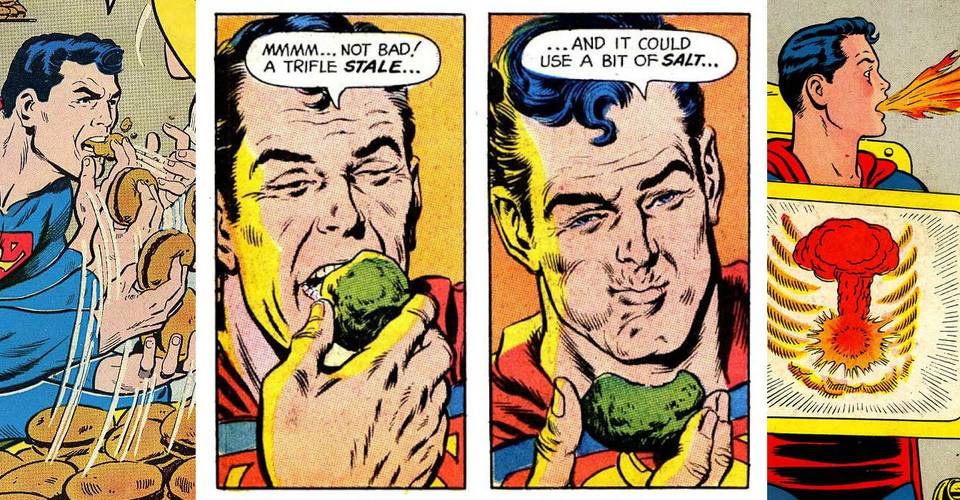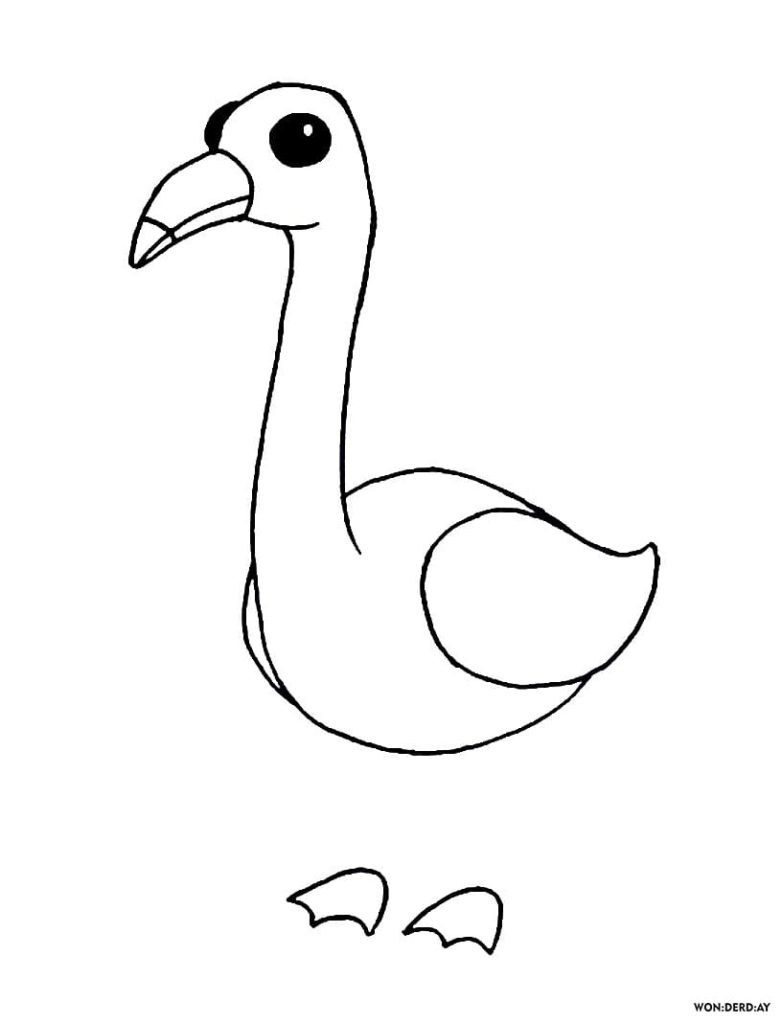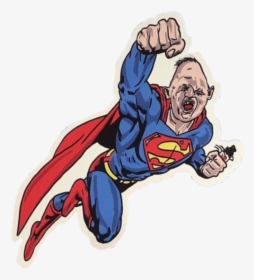A Sloth Eats Superman

There’s no disputing Superman’s title as one of the best heroes of all time, but with great power comes… well, you get it. Here are a few times Supes took it too far.
In a comic adventure that is so ’70s it should come packaged with bell bottoms, Superman once went against “The Greatest.” An alien overlord of a faraway planet comes to Earth and challenges its greatest champion to a boxing match. Superman steps forward and is like “Duh, I got this,” when Muhammad Ali interjects and points out Superman isn’t even human. Outlawyered and pressured by the peanut gallery, Superman CHALLENGES ALI TO A BOXING MATCH. Rat’Lar (the evil alien overlord) suggests that a fairer fight might take place on his planet, which has a red sun. In case you don’t remember, red suns are semi-Kryptonite to Supes and make his strength comparable to a humans. Knowing at this point he’s just basically a human challenging a professional athlete in his sport, Superman could’ve backed down. He says “Nah” and gets his ass beat down. Ali goes on to win it all and somehow discovers Superman’s secret identity. Batman gets ringside seats and no one acknowledges it. It’s a classic in WTF comic literature.
Can you own a sloth in washington state, Download Sloth Online RPG for free. Sloth Online RPG is a 2D fully graphical online game engine. It features rich tile based maps with layers, fully customizable characters and a completely interactive environment. You know what you get for being a hero? You get shot at. You get a little pat on the back, blah, blah, blah, attaboy. You get divorced. Your wife can't remember your last name. Your kids don't want to talk to you. You get to eat a lot of meals by yourself. Trust me, kid, nobody wants to be that guy.
Let’s back up, though. When the initial fight is proposed, Superman is fully ready to throw down. He has no qualms with straight up murdering an American icon in the ring and is lacing up WHEN THE VILLAIN pipes up as the voice of reason to make it a “fair fight.” Who knows why Superman doesn’t back down after realizing he’s outmatched, but knowing the time and era, I can only assume midwestern institutionalized racism. Totally kidding about that last part, but can you imagine if Superman was actually written with the personality of a white, middle-aged man born in the ’50s and raised in Kansas?
Silver age Superman was unbelievably strong. He was so strong, in fact, that writers at the time ran out of villains that could present any real threat and were forced to lower his strength level. Among some of the incredible things that happened in this time period, Superman once sneezed so hard he destroyed a galaxy. It’s so much crazier than that, though, and it all starts with Mister Mxyzptlk.
You’d think a magical Imp with the power to do anything evil would be a bit more creative than something you could buy at a novelty shop. Alas Mxyzptlk (which there is no autocorrect to prevent me from misspelling throughout the post) unleashes a mass amount of sneezing powder upon the Earth. Superman, frightened by the implications of a temporarily sneezing world, inhales a worlds supply of sneezing powder into his nose. He then flies at the speed of light into a dead galaxy and sneezes so ferociously that he obliterates it in entirety. My personal favorite line is when he says, “I suspected this would happen,” because only Superman would have a contingency plan for the day he ever sneezed.
This is by far the most horrifying headline on the list, and unfortunately, it totally happened. In the Injustice comics series, Superman is under the influence of Scarecrow’s drugs. Believing he is fighting Doomsday, Superman holds nothing back and punches Doomsday in the stomach so hard he goes sailing into space. Superman then realizes he just killed Lois and her unborn child and punches a literal hole through The Joker. For whatever reason, the game developers of Injustice: Gods Among Us replaced the comic death scene with instead the Joker blowing her up. One can only speculate as to why.
“IF I DON’T EAT ALL THESE HAMBURGERS I’LL STARVE TO DEATH,” Superman proclaims as he shoves another fistful of hamburger into his mouth. It’s a compelling cover for an action comic and completely not true in context of the story. Superman is feeling weak throughout the issue due to a machine sapping the solar energy from the Earth. This causes him to fall asleep at awkward times and experience difficulty fighting villains, but not once does anyone say he will starve to death. Superman burns an entire paycheck at some burger shack stress eating and then hours later saves the day. Sounds like the only real danger was the bathroom endeavor he would undergo the next day.
Psychological breakdown or not, Superman couldn’t even be a proper evil villain. Instead he goes around committing ridiculous acts such as this. And they say Richard Pryor was the worst part of this film…

Sloth Arm
Our editors will review what you’ve submitted and determine whether to revise the article.
Join Britannica's Publishing Partner Program and our community of experts to gain a global audience for your work!
and our community of experts to gain a global audience for your work! Sloth, (suborder Phyllophaga), tree-dwelling mammal noted for its slowness of movement. All five living species are limited to the lowland tropical forests of South and Central America, where they can be found high in the forest canopy sunning, resting, or feeding on leaves. Although two-toed sloths (family Megalonychidae) are capable of climbing and positioning themselves vertically, they spend almost all of their time hanging horizontally, using their large hooklike extremities to move along branches and vines. Three-toed sloths (family Bradypodidae) move in the same way but often sit in the forks of trees rather than hanging from branches.
What kind of animal is a sloth?
Sloths are mammals. They are part of the order Pilosa, which is also home to anteaters. Together with armadillos, sloths and anteaters form the magnorder Xenarthra.
How many types of sloths are there?
A total of five species of sloths exist: the pygmy three-toed sloth, the maned sloth, the pale-throated three-toed sloth, the brown-throated three-toed sloth, and Linnaeus's two-toed sloth. All sloths are either two-toed or three-toed.

Where do sloths live?
Sloths live in the lowland tropical areas of South and Central America. They spend most of their life in the forest canopy. Two-toed sloths tend to hang horizontally from branches, while three-toed sloths often sit in the forks of trees.
What do sloths eat?
Sloths are omnivores. Because they spend most of their time in trees, they like to munch on leaves, twigs, flowers, and other foliage, though some species may eat insects and other small animals.
Goonies Sloth Superman

Why are sloths so slow?
Sloths are slow because of their diet and metabolic rate. They eat a low-calorie diet consisting exclusively of plants, and they metabolize at a rate that is only 40–45 percent of what is expected for mammals of their weight. Sloths must move slowly to conserve energy.
Sloths have long legs, stumpy tails, and rounded heads with inconspicuous ears. Although they possess colour vision, sloths’ eyesight and hearing are not very acute; orientation is mainly by touch. The limbs are adapted for suspending the body rather than supporting it. As a result, sloths are completely helpless on the ground unless there is something to grasp. Even then, they are able only to drag themselves along with their claws. They are surprisingly good swimmers. Generally nocturnal, sloths are solitary and are aggressive toward others of the same sex.
Sloths have large multichambered stomachs and an ability to tolerate strong chemicals from the foliage they eat. The leafy food is digested slowly; a fermenting meal may take up to a week to process. The stomach is constantly filled, its contents making up about 30 percent of the sloth’s weight. Sloths descend to the ground at approximately six-day intervals to urinate and defecate (see Sidebar: A moving habitat). Physiologically, sloths are heterothermic—that is, they have imperfect control over their body temperature. Normally ranging between 25 and 35 °C (77 and 95 °F), body temperature may drop to as low as 20 °C (68 °F). At this temperature the animals become torpid. Although heterothermicity makes sloths very sensitive to temperature change, they have thick skin and are able to withstand severe injuries.
All sloths were formerly classified in the same family (Bradypodidae), but two-toed sloths have been found to be so different from three-toed sloths that they are now classified in a separate family (Megalonychidae).
A Sloth Eats Superman Gif
Three-toed sloths
The three-toed sloth (family Bradypodidae) is also called the ai in Latin America because of the high-pitched cry it produces when agitated. All four species belong to the same genus, Bradypus, and the coloration of their short facial hair bestows them with a perpetually smiling expression. The brown-throated three-toed sloth (B. variegatus) occurs in Central and South America from Honduras to northern Argentina; the pale-throated three-toed sloth (B. tridactylus) is found in northern South America; the maned sloth (B. torquatus) is restricted to the small Atlantic forest of southeastern Brazil; and the pygmy three-toed sloth (B. pygmaeus) inhabits the Isla Escudo de Veraguas, a small Caribbean island off the northwestern coast of Panama.
Although most mammals have seven neck vertebrae, three-toed sloths have eight or nine, which permits them to turn their heads through a 270° arc. The teeth are simple pegs, and the upper front pair are smaller than the others; incisor and true canine teeth are lacking. Adults weigh only about 4 kg (8.8 pounds), and the young weigh less than 1 kg (2.2 pounds), possibly as little as 150–250 grams (about 5–9 ounces) at birth. (The birth weight of B. torquatus, for example, is only 300 grams [about 11 ounces].) The head and body length of three-toed sloths averages 58 cm (23 inches), and the tail is short, round, and movable. The forelimbs are 50 percent longer than the hind limbs; all four feet have three long, curved sharp claws. Sloths’ coloration makes them difficult to spot, even though they are very common in some areas. The outer layer of shaggy long hair is pale brown to gray and covers a short, dense coat of black-and-white underfur. The outer hairs have many cracks, perhaps caused by the algae living there. The algae give the animals a greenish tinge, especially during the rainy season. Sexes look alike in the maned sloth, but in the other species males have a large patch (speculum) in the middle of the back that lacks overhair, thus revealing the black dorsal stripe and bordering white underfur, which is sometimes stained yellow to orange. The maned sloth gets its name from the long black hair on the back of its head and neck.
Three-toed sloths, although mainly nocturnal, may be active day or night but spend only about 10 percent of their time moving at all. They sleep either perched in the fork of a tree or hanging from a branch, with all four feet bunched together and the head tucked in on the chest. In this posture the sloth resembles a clump of dead leaves, so inconspicuous that it was once thought these animals ate only the leaves of cecropia trees because in other trees it went undetected. Research has since shown that they eat the foliage of a wide variety of other trees and vines. Locating food by touch and smell, the sloth feeds by hooking a branch with its claws and pulling it to its mouth. Sloths’ slow movements and mainly nocturnal habits generally do not attract the attention of predators such as jaguars and harpy eagles. Normally, three-toed sloths are silent and docile, but if disturbed they can strike out furiously with the sharp foreclaws.
Reproduction is seasonal in the brown- and pale-throated species; the maned sloth may breed throughout the year. Reproduction in pygmy three-toed sloths, however, has not yet been observed. A single young is born after less than six months’ gestation. Newborn sloths cling to the mother’s abdomen and remain with the mother until at least five months of age. Three-toed sloths are so difficult to maintain in captivity that little is known about their breeding behaviour and other aspects of their life history.
- related topics